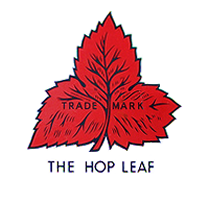
Bucklebury is a village and civil parish in West Berkshire, England, about 5 miles (8 km) north-east of Newbury and 1–3 miles (1.6–4.8 km) north of the A4 road. The parish has a population of 2,116, but the village is much smaller. Bucklebury Common, with an area of over 1 square kilometre (0.39 sq mi), is one of the largest commons in the ceremonial and historic county of Berkshire.

Reading Museum is a museum of the history of the town of Reading, in the English county of Berkshire, and the surrounding area. It is accommodated within Reading Town Hall, and contains galleries describing the history of Reading and its related industries, a gallery of artefacts discovered during the excavations of Calleva Atrebatum, a copy of the Bayeux Tapestry, finds relating to Reading Abbey and an art collection.

Huntley & Palmers is a British company of biscuit makers originally based in Reading, Berkshire. Formed by Joseph Huntley in 1822, the company became one of the world's first global brands and ran what was once the world's largest biscuit factory. The biscuits were sold in elaborately decorated biscuit tins. In 1900, the company's products were sold in 172 countries; further, their global reach saw their advertising posters feature scenes from around the world. Over the years, the company was also known as "J. Huntley & Son" and "Huntley & Palmer".
Alfred Palmer (1852-1936) was a member of the Palmer family, proprietors of the Huntley & Palmers biscuit manufacturers of Reading in England.

George Palmer was a British entrepreneur, being mostly known as proprietor of the Huntley & Palmers biscuit manufacturers of Reading in England.

Palmer Park is a public park in Reading, England. The land for the park was given to the town by the proprietors of the Huntley & Palmers biscuit firm and it contains a statue of George Palmer. The park in turn gives its name to Park ward of the Borough of Reading, which surrounds it.

H & G Simonds Ltd was a brewing company founded in Reading, Berkshire, England in 1785 by William Blackall Simonds. The company amalgamated with Courage & Barclay in 1960 and dropped the Simonds name after ten years. Eventually the firm became part of Scottish & Newcastle who sold the brands to Wells & Young's Brewery in 2007 and closed the Reading brewery three years later.

The Maiwand Lion is a sculpture and war memorial in the Forbury Gardens, a public park in the town of Reading, in the English county of Berkshire. The statue was named after the Battle of Maiwand and was unveiled in December 1886 to commemorate the deaths of 329 men from the 66th (Berkshire) Regiment of Foot during the campaign in the Second Anglo-Afghan War in Afghanistan between 1878 and 1880. It is sometimes known locally as the Forbury Lion.

George Blackall Simonds was an English sculptor and a director of H & G Simonds Brewery in Reading, Berkshire.
Blackall Simonds may refer to:

Newtown, Reading is a suburb of the town of Reading in Berkshire, England. It is situated in East Reading between the Cemetery Junction and the River Kennet. The population is a socially and ethnically diverse mix of families, professionals and Reading University students.

Marlston is a village in the English ceremonial county of Berkshire. For administrative purposes, it lies within the civil parish of Bucklebury and the unitary authority of West Berkshire.
William Blackall Simonds (1761–1834) was a brewer and banker in the English town of Reading. He founded both H & G Simonds Brewery, which merged with other breweries to form Courage, Barclay, Simonds & Co in 1960, and J & C Simonds Bank, one of the precursors to Barclays bank.
Occupation at the site of Reading may date back to the Roman period, possibly as either a trading port on the River Thames, or as an intersection on the Roman road connecting London with Calleva Atrebatum near Silchester.

George Edward Wade was a British sculptor. He was largely self-taught as an artist and is best remembered for his statues of royalty and politicians.

The statue of Queen Victoria stands at the eastern end of Friar Street outside the Town Hall of Reading, Berkshire, in southern England.

The Sir Joseph Bazalgette Memorial is a memorial to the Victorian engineer Sir Joseph Bazalgette, by George Blackall Simonds. It is located on the Victoria Embankment, a few feet up river from the Hungerford Bridge and Golden Jubilee Bridges, opposite the junction with Northumberland Avenue.

The following is a timeline of the history of Reading, the county town of Berkshire in England.

















